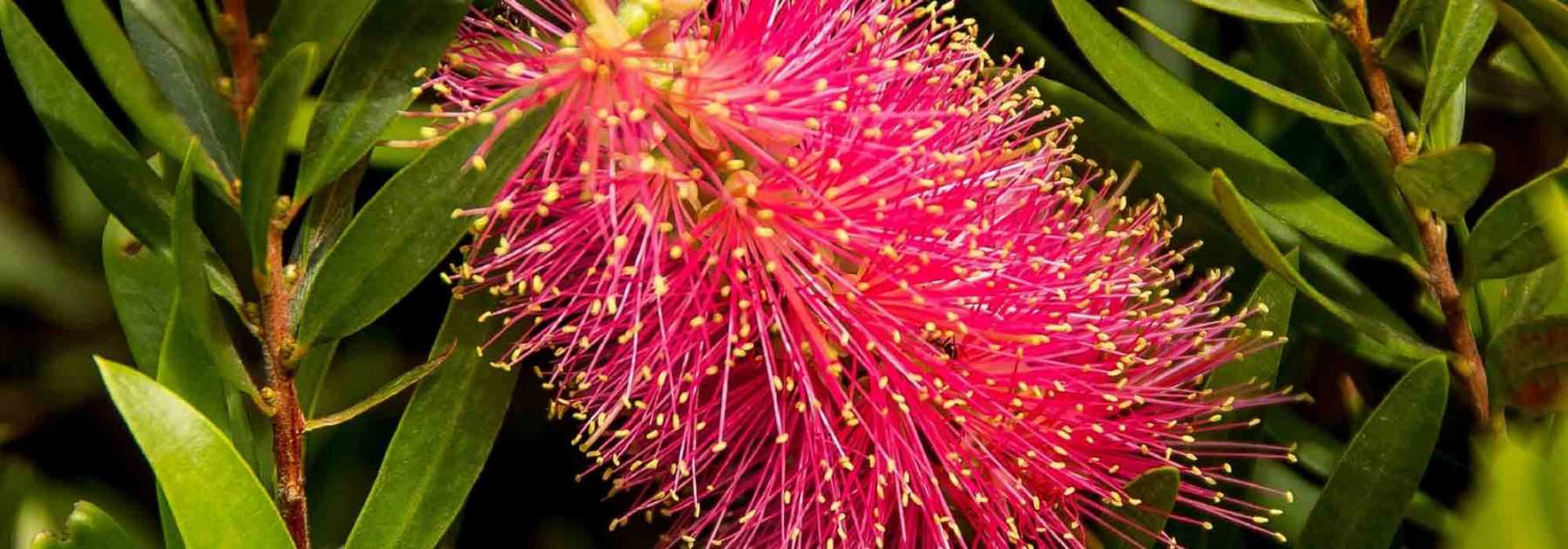
Callistemon, Bottlebrush: Planting, Pruning and Care
Contents
The Bottlebrush in a few words
- The Callistemon or “Bottlebrush” offers unique summer blooms shaped like bottle brushes,
- This Australian shrub is evergreen with a bushy habit
- Frost-sensitive but heat-tolerant, it thrives in mild climates
- It grows in full sun in any well-drained soil
- In colder regions, it adapts well to container cultivation
Our expert's advice
Callistemon, also known as ‘bottlebrush’, is a small Australian shrub hardy down to at least -8°C in perfectly drained soil, tolerating occasional drought and poor soils remarkably well.
From spring to autumn and sometimes year-round depending on the region, it forms a beautiful bush covered with fine evergreen foliage, sometimes aromatic, from which bursts forth a profusion of flowers resembling small bottle brushes.
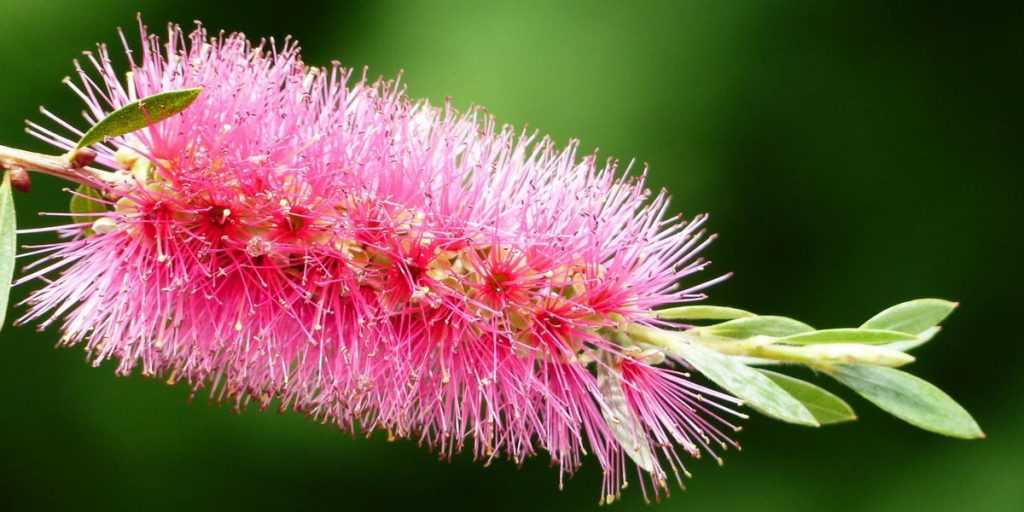
Callistemon owes its nickname “Bottlebrush” to the distinctive shape of its flowers
While the most commonly cultivated is Callistemon citrinus, there are other equally interesting species such as Callistemon laevis with fiery red brushes, Callistemon rigidus, and Callistemon viminalis with its beautiful fountain-like silhouette. Depending on the species, Callistemons vary in their frost sensitivity. It thrives in full sun, tolerating sea spray and summer drought. Its cultivation method varies by region.
In the garden, it’s best suited to mild climates, oceanic or Mediterranean. Elsewhere, it adapts perfectly to container growing, to be wintered indoors like citrus plants.
Its original, slightly sprawling silhouette and dazzling flowering make it essential in informal hedges or beds of evergreen shrubs.
How to prune a bottlebrush? How to take cuttings? Discover all our experts’ answers and be tempted by our collection of bottlebrushes at all prices.
Botany
Botanical data
- Latin name Callistemon
- Family Myrtaceae
- Common name Callistemon, Rince-bouteille, plante goupillon
- Flowering d'avril-mai jusqu’à l’automne
- Height 1 à 10 m
- Exposure Soleil, mi-ombre
- Soil type Neutre, acide, bien drainé
- Hardiness -5°C-10°C
The Callistemon genus comprises around thirty species of evergreen trees and shrubs, native to moist soils near watercourses in temperate regions of Australia. Commonly known as “Bottlebrush”, it belongs to the Myrtaceae family, like its relatives eucalyptus, myrtle and Leptospermum. It is sometimes confused with Melaleuca, with which it shares a striking resemblance.
Callistemon citrinus, Callistemon rigidus, and the highly floriferous Callistemon viminalis and Callistemon laevis are the most common in gardens with mild winters. They have given rise to many cultivars with improved cold resistance. Its growth is relatively fast if not checked by frost, and it can live for many years.
It develops into a handsome shrub, with a lovely bushy habit in its youth, sometimes remaining under 1m tall but potentially growing into a small tree reaching up to 10m, with slightly arching or weeping stems.
The shape varies between species and varieties – rounded, semi-weeping with age, rather stiff in Callistemon rigidus, softening to a fountain shape in Callistemon viminalis (also called Weeping Bottlebrush). It has attractive bark – reddish-brown or grey-brown in fissured strips, particularly decorative in some species.
The tough evergreen foliage provides year-round elegance. The leaves are long and narrow (2-15cm), alternate, pointed, sometimes so slender they resemble needles. Growth is rather sparse in Callistemon rigidus. Juvenile leaves have a silky, downy texture, emerging in spring as purple, orange-grey or salmon-red shoots that later become smooth, turning light green, bright green, acid green, grey-green or dark green. Callistemon citrinus leaves release a delightful eucalyptus and lemon fragrance when crushed.
Callistemon is prized for its unique and dazzling summer blooms – the colourful bottlebrush flowers that give it its common name. From May-June for about a month, then sporadically in autumn, small five-petalled flowers cluster in cylindrical spikes on slender stems at the tips of young shoots.
They feature exceptionally long stamens dusted with golden-yellow pollen, resembling bottle brushes, topped with tufts of new growth. Flower colour and form vary between species.

Development of a Callistemon flower
Covering the entire shrub, these upright or slightly pendulous inflorescences can reach up to 15cm long, giving the plant either a weeping or shaggy appearance.
These feathery flower spikes are most often bright red, sometimes almost fluorescent, but also come in softer shades from pure white to cream (Callistemon citrinus ‘White Anzac’), purple-pink (Callistemon viminalis Hot Pink), mauve (Callistemon ‘Violaceus’) or even lemon yellow (Callistemon pityoides). Callistemon citrinus flowers emit a delicious lemony fragrance.
Flowering occurs in successive waves and may repeat up to four times yearly from June to August-September depending on climate: the terminal bud repeatedly produces new leaves followed by fresh bottlebrushes, particularly in late summer.
Rich in nectar, the flowers attract numerous pollinating insects including bees and butterflies.
After flowering, small 4-6mm spherical woody capsules form, partially embedded in the stems. These hard capsules contain fine, dust-like brown seeds. Callistemon is a pyrophytic species – fire causes the capsules to burst, triggering germination of dormant seeds.
Callistemon is somewhat tender, hardy to around -5°C/-8°C (sometimes -12°C in well-drained soil for the most cold-resistant varieties). It thrives in regions with mild winters. In the ground, it’s best suited to Mediterranean or Atlantic climates where it can be grown as a specimen or informal hedge. In colder areas, grow in containers as an orangery plant.
It flourishes in full sun or partial shade in fertile, light, well-drained soil, moist to dry in summer.
Species and main varieties
The genus mainly consists of species with moderate hardiness (-10 to -12°C) to low hardiness (-5 to -8°C), with some Callistemons being the most sensitive to frost. While the most widespread and the first “bottlebrush” cultivated in our gardens was long the Callistemon citrinus, followed by the Callistemon rigidus, likely due to their increased frost resistance (-12°C in perfectly well-drained soil), the highly floriferous Callistemon viminalis and Callistemon laevis, though less hardy, have also found their place in our latitudes. Today, there are many more cold-resistant cultivars as well as compact varieties well-suited to container growing.

Callistemon citrinus Splendens - Bottlebrush
- Flowering time July to September
- Height at maturity 2,50 m

Callistemon rigidus - Bottlebrush
- Flowering time June, July
- Height at maturity 2,50 m

Callistemon viminalis - Bottlebrush
- Flowering time June to October
- Height at maturity 7 m

Callistemon viminalis Hot Pink - Bottlebrush
- Flowering time June to October
- Height at maturity 1,70 m

Callistemon laevis - Bottlebrush
- Flowering time June to October
- Height at maturity 1,80 m
Discover other Callistemon
Planting
Where to Plant a Bottlebrush
The Callistemon is cultivated differently depending on the region. Generally quite tender, it can withstand frosts down to -8°C, but its foliage may be damaged by cold temperatures as low as -5°C. The hardiest varieties, such as Callistemon citrinus, can tolerate temperatures of around -10 to -12°C for short periods.
Planting in the ground is best suited to regions with mild winters where frost is neither prolonged nor severe. You can safely plant it in the ground south of the Loire. Resistant to wind and salt spray, it is also an excellent choice for coastal gardens.
In regions with frequent but brief and light frosts, position it in a south-facing spot sheltered by a wall.
In the ground, it thrives in full sun, protected from strong winds to prevent damage to its somewhat brittle stems, especially when weighed down by flowers. It also tolerates partial shade, though flowering may be less abundant.
It adapts to almost any soil type, whether moist or dry in summer. It grows best in non-calcareous, fairly fertile soil. In deep soil, once established, it will show increased drought resistance. A slightly rocky or sandy, mildly acidic to neutral soil, as long as it is well-drained, will also suit it well. Some species (e.g., Callistemon pallidus), native to marshy Australian coastlines, can tolerate temporary flooding and poor drainage.
Though capable of growing in poor, relatively dry soil, the Callistemon prefers moist conditions in summer and greatly benefits from watering in dry climates.
Choose a location with enough space—it grows quickly and will soon form a large shrub, sometimes exceeding 6m in height and spread. Some species, like the weeping bottlebrush, can reach 8 to 10 metres in height in our latitudes.
In colder climates, north of the Loire, opt for planting in a large container that can be moved to an unheated greenhouse or conservatory in winter. Ensure good drainage and water generously, allowing the substrate to dry out between waterings.
Whether in pots or in the ground, the Callistemon adds striking originality to gardens and terraces. It can be planted as a centrepiece or backdrop in borders, as a standalone specimen or in informal or evergreen hedges.
When to Plant Callistemon
The best time to plant Callistemon is in April-May, once the risk of frost has passed, or in early autumn in very mild climates.
How to Plant Callistemon
Planting a Callistemon is straightforward. If your soil is alkaline, mix in heather soil and compost. The Callistemon prefers cool roots in summer and must never show signs of dehydration: watering should be generous and regular throughout the warm season. If its leaves dry out, it may not recover.
In the ground
- Dig a hole 3 to 5 times wider than the root ball
- Add a layer of gravel at the bottom
- Plant the shrub at soil level in a mix of compost, potting soil, ground horn, coarse sand, and garden soil
- Fill the hole, keeping the shrub upright
- Firm the soil with your foot
- Mulch around the base
- Water thoroughly after planting, then once or twice weekly during the warm season, especially in early summers
- Reduce watering in autumn and stop in winter
In pots
Good drainage is essential. It will also have higher water needs, but avoid overwatering, which can yellow the foliage!
- Place a thick drainage layer (gravel or clay pebbles) in a pot at least 50cm in diameter
- Plant in slightly sandy substrate enriched with leaf mould and mulch the base
- In summer, water generously when the soil dries out (about twice a week)
- In winter, water sparingly
- Apply slow-release fertiliser in spring
- Move the pot indoors at the first sign of frost in cold regions
Once the risk of frost has passed, move the Callistemon outdoors to enjoy the warm season.
Care and maintenance
The Callistemon is easy to grow in Mediterranean regions or along the mild-winter Atlantic coast.
Once well established, it requires little attention and will become increasingly drought-resistant. Bottlebrushes grown in pots need more care than those planted in the ground.
The Callistemon prefers cool soil in summer. Throughout the warm season, water generously and regularly, once or twice a week, to keep the base moist but never waterlogged. Reduce watering frequency in autumn and stop altogether in winter.
It likes its roots cool in summer and warm during the cold season. Mulch around the base of the shrub in autumn to protect it from frost, especially during the first few winters. If severe frost is forecast, protect the above-ground parts with winter fleece and, in colder climates, follow our advice: Callistemon, Bottlebrush: how to protect it from winter cold?
In pots
Water regularly throughout summer. During the growing season, to encourage flowering, apply a good slow-release fertiliser once or twice a year. Move it to a cool greenhouse in winter where temperatures won’t drop below 7°C. Continue watering about once a month. Refresh the compost after 4-5 years, doing so after flowering.
When and how to prune a Bottlebrush?
The Callistemon must absolutely be pruned right after flowering to maintain a bushy shape. Pruning stimulates flowering, encourages branch regrowth and helps maintain a nice, compact form. Pruning also prevents fruiting which could exhaust the plant.
- Prune at the end of flowering or in late autumn to reshape
- Maintenance simply involves removing weak shoots, dead wood and wind-damaged branches in late winter
- To encourage repeat flowering: remove spent flower spikes as they fade
- If you wish to restrict growth and maintain a compact shape, it will tolerate occasional hard pruning
Diseases and potential pests
The bottlebrush is relatively resistant to pests and shows good disease resistance, though greenhouse-grown plants may be more susceptible to infestations.
In case of red spider mite invasions, spray with soapy water.
It can also be attacked by scale insects. Treat with rapeseed oil sprays, repeating two or three times at 15-day intervals.
Sawfly larvae or false caterpillars may literally devour the leaves like voracious lace-makers! A solution of black soap can be enough to eliminate them.
Cylindrocladium scoparium, a fungus naturally present in Myrtaceae, can cause leaf spots and stem necrosis.
In overly chalky soil or due to waterlogging, leaves may yellow from chlorosis. Good drainage and regular applications of compost and ericaceous soil, worked into the base of the shrub, can sometimes prevent its occurrence.
→ Learn more about bottlebrush diseases and pests in our guide.
Propagation
Propagating callistemon from seed is possible (provided you first heat the seed capsules with a candle flame!), but flowering will only occur 3 to 6 years later. Semi-hardwood cuttings, taken in late summer, are simpler and more reliable. Rooting may take time, but flowering occurs as early as the first year.
- In late summer, take 10-15 cm semi-ripe shoots just below a node (meaning stems transitioning from softwood to hardwood)
- Make a 5 cm vertical slit in the bark
- Remove leaves from the lower third
- Plant in a light, well-draining mix of sand and compost
- Keep the substrate moist until rooting occurs, which may take several months
- Pot up cuttings the following spring or plant out permanently
- Water well during the first year after planting
→ Learn more in our tutorial: Propagating Callistemon from Cuttings
Pair
Remarkable for its luminous or incandescent display throughout summer, the Callistemon or “Bottlebrush” thrives in all natural and wild gardens. Along the Mediterranean coast or in Atlantic climates, it can be planted almost anywhere in the garden—as a standalone feature, at the back of a perennial bed, or grouped in informal hedges. It creates lush and generous summer scenes.
It will look spectacular in an evergreen hedge, paired with a shrubby ceanothus (‘Skylark’), a summer-flowering broom (Cytisus scoparius ‘Apricot Gem’), alongside myrtles or oleanders.
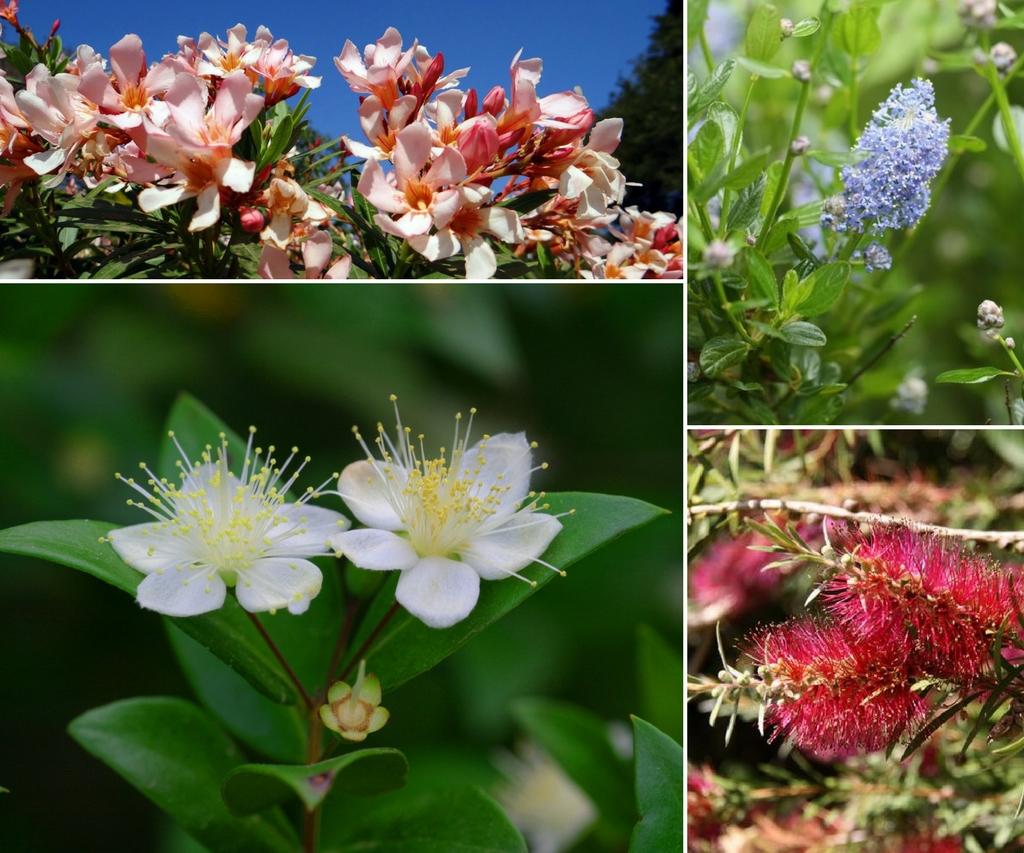

An example of an evergreen hedge combination: Nerium oleander – Ceanothus ‘Skylark’ – Myrtus communis – Callistemon viminalis
In a mixed hedge, it pairs beautifully with Caesalpinia gillesii or Buddleias. With its distinctive shape, it complements tamarisks, hibiscus, and smoke trees.
Tolerant of sea spray, it makes an excellent choice for coastal gardens in mixed hedges.
As a standalone centrepiece in a bed of low-growing or ground-cover plants, or in a large rockery, it will look stunning surrounded by sun-loving perennials such as small cistus, Linaria purpurea, Oriental poppies, echinaceas, coreopsis, and rudbeckias, which will highlight its spectacular blooms.
Its base can be adorned with summer-flowering shrubby perennials like red-flowered Salvia.
Create an evergreen bed with Mediterranean accents by pairing it with lavenders, creeping rosemary, and euphorbias.
In a more exotic-style planting scheme, it blends well with its Australian relatives such as Phormium, Melaleuca gibbosa, Grevillea rosmarinifolia, and Leptospermum.
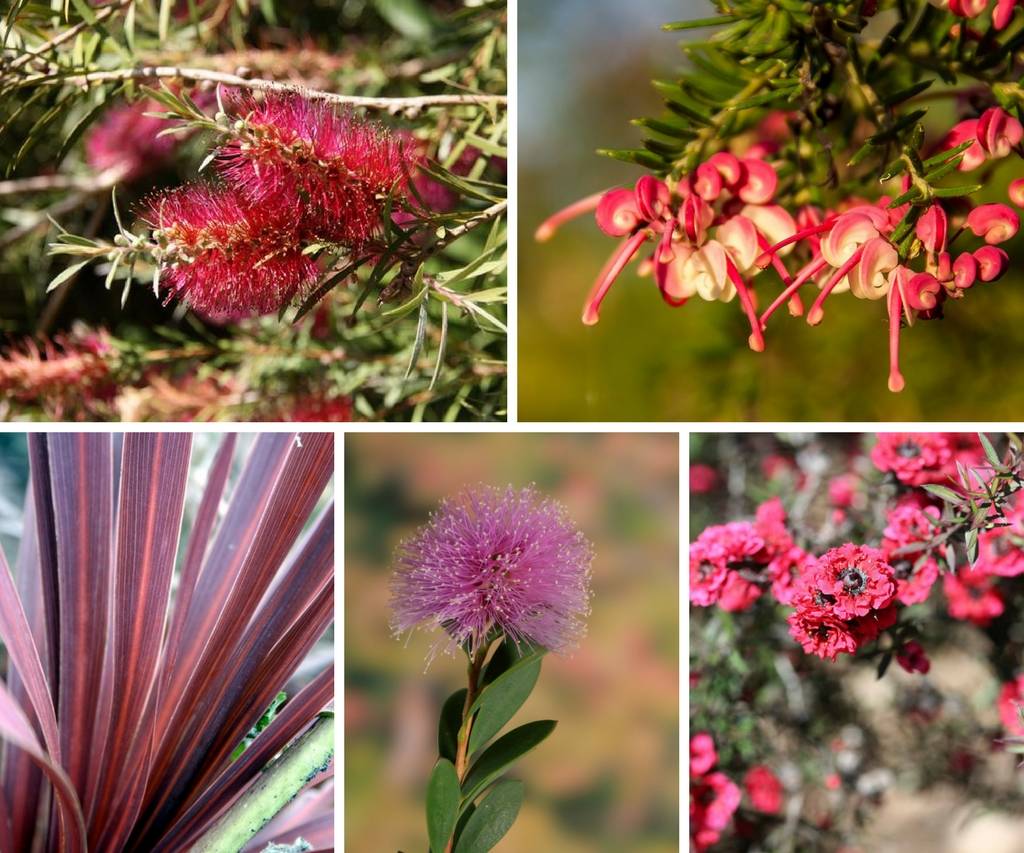

An example of an exotic combination: Callistemon viminalis– Grevillea rosmarinifolia – Phormium – Melaleuca gibbosa and Leptospermum scoparium ‘Red Damask’.
In a greenhouse or conservatory, it will complement an orange tree or mimosa.
→ Discover more ideas for pairing Callistemon in our advice guide!
Useful resources
- From classic to exclusive varieties, explore our collection of bottlebrush
- Care guide: How to prune a Callistemon?
- Care guide: Callistemon or Bottlebrush: the best varieties
- Care guide: Callistemon, Bottlebrush: how to protect it from winter cold?
- Care guide: How to choose a Callistemon?
Frequently asked questions
-
Why isn't my bottlebrush flowering?
Hailing from southern origins, the Callistemon has retained a love for full sun. It refuses to flower in dense shade, which may indicate its position isn't sunny enough. This shrub blooms in late spring and then sporadically throughout the rest of the year. Lastly, the "Bottlebrush" shows more abundant flowering in soil that isn't too dry and without excessive lime. Water regularly throughout the warm season. By removing faded flowers as they appear, you'll also encourage new blooms.
-
My bottlebrush has dry leaves after winter, should I be worried?
If all the leaves and small branches are dry, it has likely suffered from cold and frost damage. However, it is quite hardy and should regrow from the base. This is a Mediterranean plant that is rather sensitive to cold. Planting it directly in the ground is only really suitable for regions with mild winters where temperatures do not drop below -8°C, even for short periods.
- Subscribe!
- Contents

































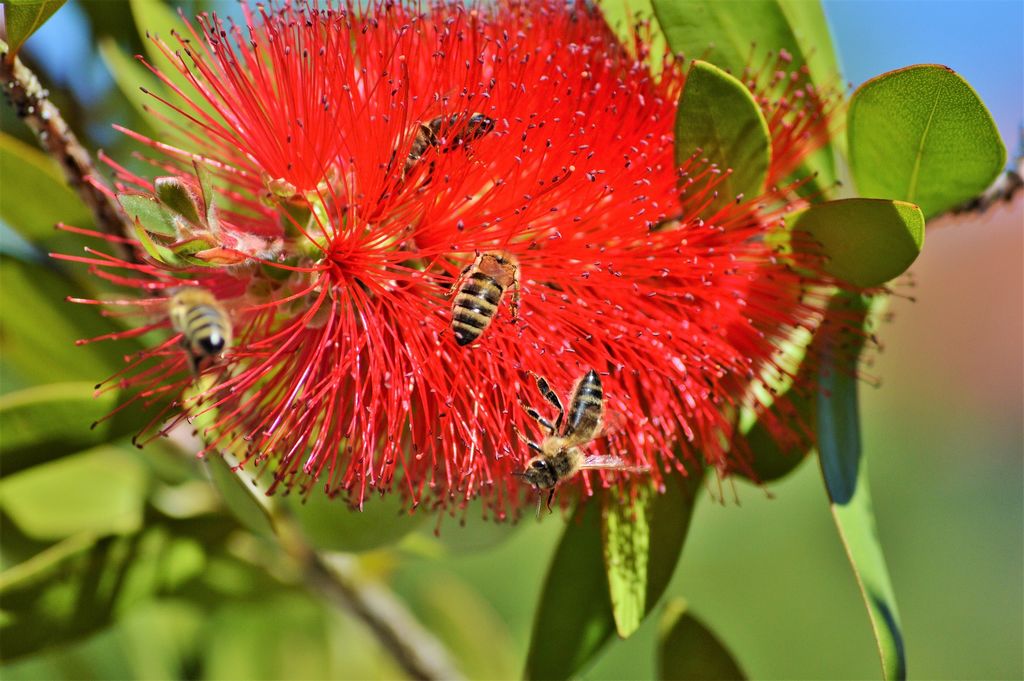
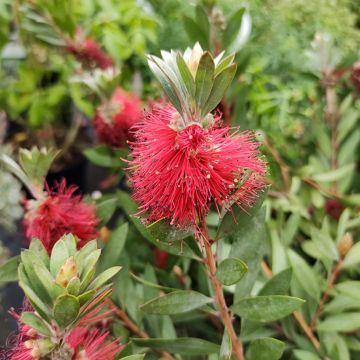
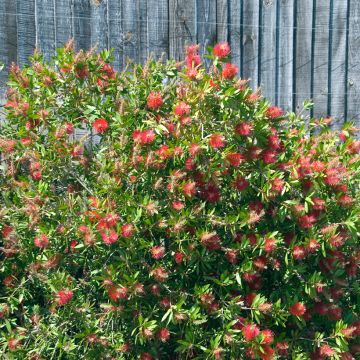
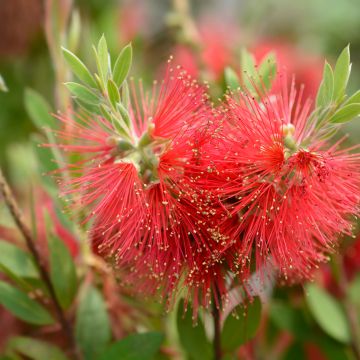
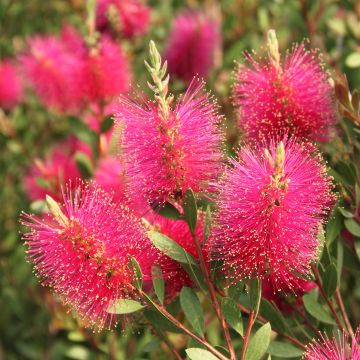
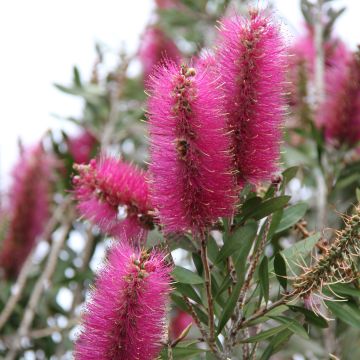
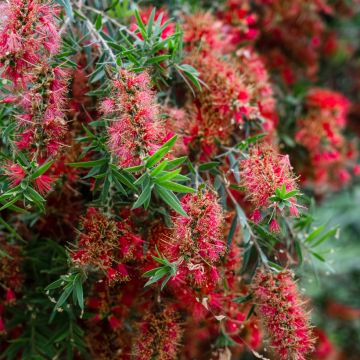
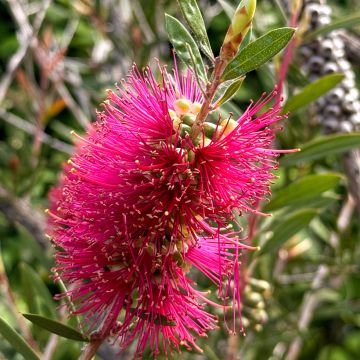
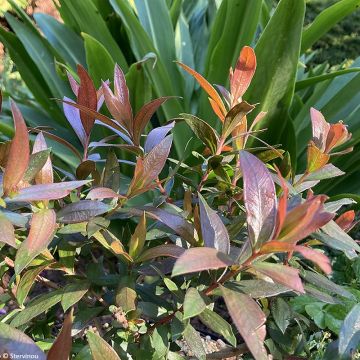
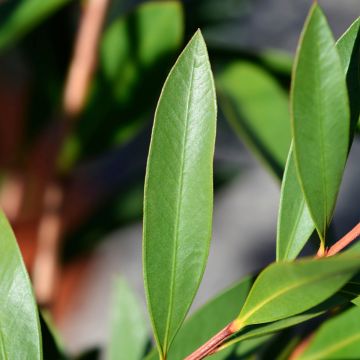
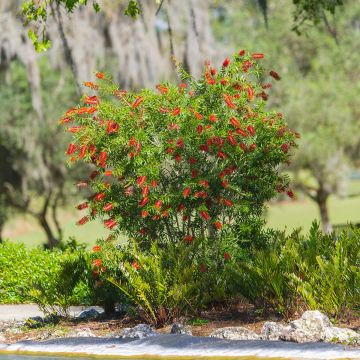
Comments